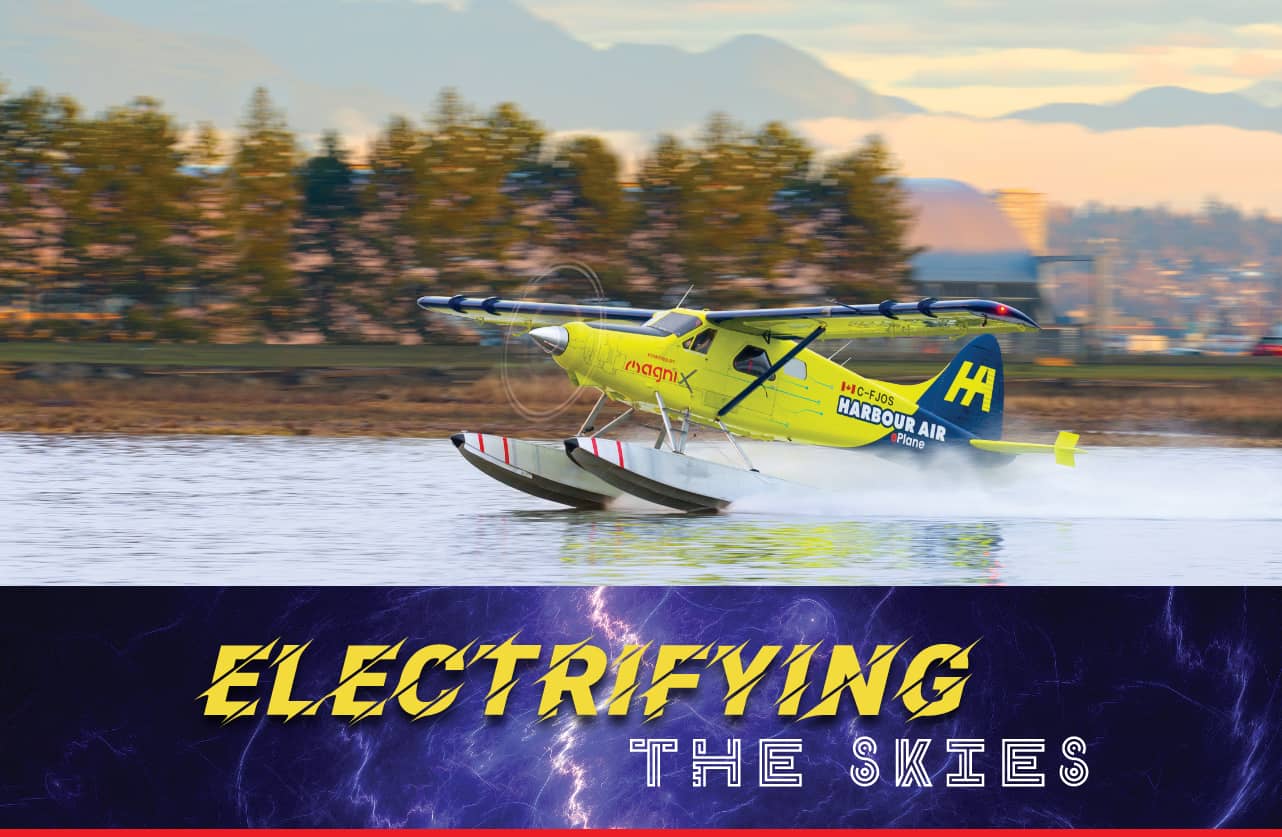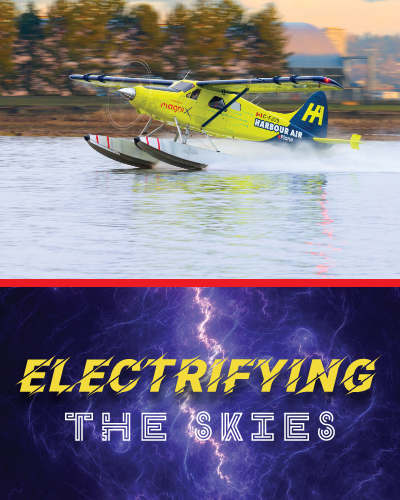

Electric and hybrid flight offers the promise of more efficient, affordable, and sustainable air travel, and Hartzell Propeller is proud to be a part of several innovative programs already making it a reality. We chatted with Roei Ganzarski, CEO of magniX and Executive Chairman of its sister company, Eviation Aircraft, to shed light on the electric aviation revolution and the future of emission-free flight.
As the aviation industry faces mounting pressure to curb its carbon footprint, innovative startups are disrupting the status quo and sparking an electric revolution.
Among the aerospace companies leading the charge are magniX and Eviation Aircraft. magniX develops advanced propulsion systems for electric aircraft, focusing on connecting communities with small, “middle-mile” airplanes that fly routes of less than 1,000 miles. Its sister company, Eviation, aims to build all-electric aircraft from the ground up, challenging the limits of air travel in a scalable, sustainable, and economically viable way.
“We have the opportunity to change the course of our future with electric aviation, which affords zero-emission, lower noise, and significantly lower operating costs,” said Roei Ganzarski, CEO of magniX and Executive Chairman of Eviation. “It all adds up to greater access to aviation to more people, in a way that doesn’t harm the environment or our health.”
Although battery technology is still years away from powering large passenger aircraft, the ability to retrofit existing general aviation airplanes with electric propulsion technology is providing an interim solution for sustainable, cost-effective short-range flights.
In 2019, magniX unveiled its technology with an electrified de Havilland Beaver, or “eBeaver,” in partnership with Vancouver, B.C.-based seaplane operator Harbour Air. Propelled by the 750-horsepower magni500 electric propulsion system and a four-blade composite Hartzell propeller, the eBeaver marked the world’s first flight of an all-electric commercially-focused aircraft. Harbor Air plans to eventually convert its entire fleet of more than 40 aircraft to all-electric seaplanes.
Ganzarski draws parallels between the emerging electric aviation industry and the now mainstream electric automotive industry. “Tesla did not begin with a Tesla sedan or semi-truck,” he said. “They started by taking a small, existing car and converting it to electric to prove their technology. It’s the same philosophy with airplanes—instead of designing a brand new plane, we took a proven, reliable aircraft and replaced the heavy, gas-guzzling engine and fuel system with a small, lightweight, powerful, clean electric propulsion system and batteries.”
Nearly half of commercial flights in North America are less than 500 miles in distance, offering an ample market for the current electric aviation technology. By targeting these short haul flights, electric aviation will also help to revive smaller, regional airports and open the potential for new routes, added Ganzarski.
“Currently, in the U.S., there are more than 10,000 airports, but airlines only use about 600,” he explained. “Electric aviation will help solve two problems in one swoop: the environmental aspect of emissions and noise, but also the access of air travel by reducing the cost per flight hour by 40 to 80%. It goes back to the original vision of connecting communities with smaller airports that make travel more convenient and accessible to more people,” said Ganzarski.

Meanwhile, Eviation is working on its debut commuter aircraft, Alice, which is designed from the ground up for all-electric flight.
The revolutionary airplane is equipped with components from world-class aviation partners, including custom-built, five-blade structural composite Hartzell propellers. Built with regional air travel in mind, the Alice will be capable of carrying nine passengers up to 506 miles on a single charge with zero emissions.
When it came to choosing a propeller partner for the Alice and eBeaver programs, Hartzell Propeller was the first name that came to mind. “We knew we needed reliable, proven, and efficient propellers,” said Ganzarski. “Another key aspect of our partnership is that Hartzell understands what it means to take their propellers and technology to the market under FAA certification. Hartzell’s expertise makes them a phenomenal partner.”
With magniX’s electric propulsion system on track for FAA Part 33 certification in 2022, Ganzarski says he expects to see electric aircraft flying passengers and cargo on short routes as early as 2023. “By 2030, I think it will be mainstream, similar to today’s electric vehicles,” he said.
While long-haul, commercial air travel in fully electric aircraft is still decades away, the stage is being set for electric aviation to take off.
Hartzell Propeller is proud to continue advancing the future of flight with custom propeller solutions for electric and hybrid-electric propulsion. Whether you’re working on an all-electric airplane, a hybrid-electric retrofit, or an evTOL urban air mobility design, we’d love to hear about your project. Get in touch with our team here.